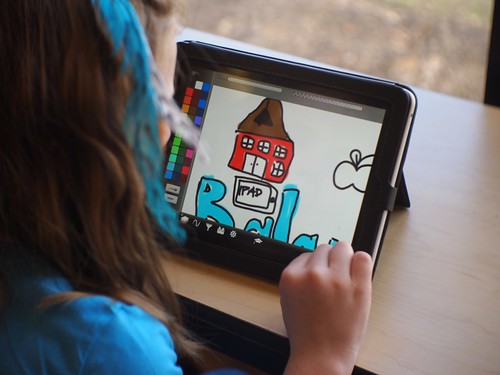After a meeting with Carla Arena, she inspired me to think about something I could do with my group. Something simple, yet challenging.
I decided to invite Teacher Henry on this journey with me. We have a Teens 5 group at the same time. My students are struggling with question forming using the simple past tense. So, here's what we did:
1. We created a document with some instructions for students. In class we gave them a bit.do shortened url as homework (each class had a different url).
2. They were supposed to make a question (using the simple past tense) to another student in another class. So, my students would be making questions to Henry's students and vice-versa.
3. On the following class, we opened the document in class and reviewed all questions. We corrected the ones that had mistakes and talked about how to make questions using their own examples.
After the questions were all made, we gave them the other class's url, so that they could answer each other's questions. This was also done as homework. One of the challenges we faced after doing the activity was that some of the students weren't able to edit the document and add their contribution. So, we found out that goggle docs can only be edited through a mobile device (cell phones / tablets) if the person is logged on, otherwise he/she can only see it, not edit. However, if the student access the document on a computer, it requires no login.
As a follow-up, many ideas came to our mind. Some of them are:
- print questions and answers and have students match them.
- have only the answers on a slideshow and then students have to come up with a correct question.
- pair-work where students would use the questions and answers as a conversation.
We decided to gather students in the school gallery. We printed the questions and randomly handed on question to each student. Then, we asked them to ask the question they had in hands to at least five students from the other class. It was fun and very meaningful! They had a very good time!

As a whole, students got engaged and we felt this practice added value to their learning. It was a meaningful task and involved students in their own learning process, linking the subject with students' own realities. We were able to spot which aspects we still needed to work further on, creating an opportunity for students not only to gain knowledge, but also to be able to apply and use what they have learned in a different yet valuable way. Since students were exposed to the content in a surprising way, the language was possibly more vividly experienced and, therefore, better remembered.
Here are the pages students worked on:
Click here to watch a nice video about Google Docs.

Lilian Marchesoni Henry Silva






.JPG)
.JPG)
.JPG)

























